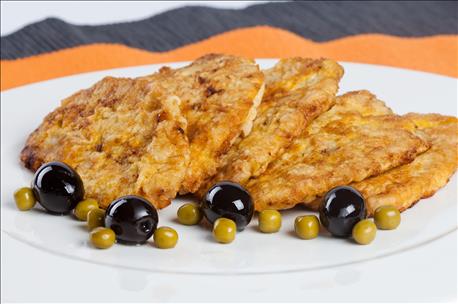
I have spent thousands of hours and driven many miles in pursuit of animal health and its many ramifications in the soil-plant-animal-human health model.
Eventually this interest and challenge led me to natural rules and a natural model that works when we work it.
The end result should be the preparation and consumption of quality food. And in fact, we cannot have quality nutrition and quality health without quality beef consumption on a real regular basis.
I love and have dreams about the perfect end-product for the beef from our grass operation. In some parts, it's known as chicken-fried steak.

Oklahoma and Texas are famous for chicken-fried steak. Baxter Black says that chicken-fried steak and pecking order are the two major contributions of the poultry industry to the beef cattle business.
Many of you probably realize that if it hadn’t been for Tennessee there would never have been an Oklahoma or Texas as we know them today. The buffalo were already there, and the cattle came from Mexico and Britain, but most of the civilized Indians and a bunch of the tough white people came from our part of the country.
In Tennessee the nomenclature and likely the looks of that beloved centerpiece will be somewhat different. In the Volunteer state “chicken-fried steak” is often “country-style steak.” I have enjoyed both.
There are basic challenges and similarities since the question is “can we take what is a less- to zero-marbled and less-sought-after cut of beef and turn it into a quality eating experience?
I’ve not been exhaustive in my dining in Texas or Oklahoma but have consumed a dozen plus chicken-fried steaks on the west side of the Mississippi River. Only one stands out in memory as being truly enjoyable. It probably wasn’t perfect but when I get a hankering for chicken-fried steak, I set the minimum standard to the one I ate at the Cattlemans Cafe in Okie City a decade ago.
In my own preparations, occasionally I hit successfully with a wonderful eating experience. Following is the front-end of the formula I try to follow.
Start with a steer or heifer that is 22-months or more in age. The boy or girl needs to be a breed or composite that possess relatively small muscle fibers, gained weight every day of its life and never used for hard work such as pulling logs from the mountainside. Harvest after the middle of the growing season through frost from a highly diverse plant species pasture with quality water available. A highly mineralized, limestone-based, organic soil that exhibits high levels of microbial activity adds tremendously to quality taste and tenderness, and to the health of the diner.
I require that our animals have fresh strips of completely recovered green forage daily and do not make local harvest or sell any steer or heifer for local consumption which we have ever "doctored" with antibiotics. A quality eating experience and ensuing positive health response by the patron begins and continues for nearly two years before the dry aging of the carcass starts.
Correct harvest of the animal needs to happen without stress, anxiety or nervousness. If we were killing at headquarters we would drive into the pasture, and shoot and immediately bleed the animal. An hour later we would eviscerate after removing the head. The hide would be left intact for five to eight days and the temperature would be regulated at about 45 degreees for a week before removing and processing the meat.
High quality butcher paper is said to be the best for long term storage. Flash freezing is very, very important.
Preparation is best begun five to 10 days before the cooking starts. I remove the round steak from the freezer and place it in the refrigerator. Cold water or 65- to 70-degree room temperature thaw is allowable.
I finish the dry aging in the refrigerator for up to 10 days then apply a rub that is three parts sugar, one part pepper, and one part salt. Cover the meat at 65 degrees room temperature for four to 12 hours. Check for tenderness by poking the meat with a fork and scrape off any excess rub.
Pound the steak completely and lightly coat with whole milk. Remove from milk and massage well with seasoned whole wheat flour before frying in beef tallow or lard.
After this you are on your own until I can honestly claim to hit perfection every time concerning “chicken fried” steak. I don’t live in Oklahoma or Texas.
About the Author(s)
You May Also Like






